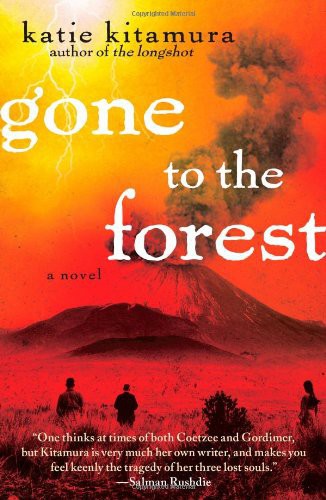
Gone to the Forest
A Novel
کتاب های مرتبط
- اطلاعات
- نقد و بررسی
- دیدگاه کاربران
نقد و بررسی

Starred review from June 11, 2012
In this wondrous tale of both a family and a country’s dissolution, Kitamura brings readers into an unspecified time in an unnamed colonial country where the natives are restless and the white settlers are soon to be relieved of what they’ve taken. In this newly unstable environment, alive with an increasingly destructive undercurrent, we meet Tom, heir to his family’s estate, whose inertia and naïveté make him an equally pitiable and winning character, particularly in contrast to his charismatic, domineering father, whose steady decline is detailed in spellbinding horror. On the brink of the country’s and the family’s decimation, a woman named Carine enters the scene and vies for the attention of both men. She is a manipulative, waiflike woman with a questionable past, and her competing tendencies toward self-destruction and self-preservation make for a vibrant conflict. Finally, there are Jose and Celeste, two bafflingly loyal servants whose connection to Tom and his father is both shocking and fitting. In her second novel (after The Longshot), Kitamura, with spare, mesmerizing prose, paints a memorable vision of emotional chaos echoed by geologic and political turmoil. Agent: Ellen Levine, Trident Media Group.

August 1, 2012
A violent story set in a nameless country, this book wavers, uncertain, between parable and reality, unable to commit to its own demands or come to terms with its premise. The book follows Kitamura's debut The Longshot, 2009, a finalist for the New York Public Library's Young Lions Award. The titular forest is not named, the title a phrase borrowed from the great Modernist novelist Knut Hamsun. We meet Tom, the son of the nameless patriarch who calls his son Thomas. We hear of conflict between "whites" and "natives," indicating a colonial conflict. We meet the faithful servant Celeste and her inscrutable son Jose. Celeste was Tom's wet nurse. Tom and Jose grew up together; native and master suckled at the same breasts. The nameless patriarch arranges a marriage for Tom to the coquettish Carine. Carine is a guest of the Wallaces, the only characters to have surnames. We are not meant to reflect on this curiosity, nor are we to wonder about the mix of periods. Clothing, methods of travel and the lack of phones seem to evoke the end of the colonial period, and yet the farm is a "fishing resort"; there is fish farming and a reference to "pain management." When a volcano erupts, it seems no more than an excuse to terrorize the hapless Tom, the nymphomaniac Carine and the nameless patriarch. The writing is too idiosyncratic to pass without comment. The sentences are short, declarative. Many are fragments. The style affected, the metaphors mixed, the effect pretentious: "The thought of the girl returns to him like a flood and she kicks inside his brain." Enthralled by its own ambition and desire to shock, this book makes astonishing demands on readers' good faith.
COPYRIGHT(2012) Kirkus Reviews, ALL RIGHTS RESERVED.

March 15, 2012
Tom and his father dwell together uneasily on their farm in an unnamed colonial country until a young woman named Carine enters their lives, causing tensions to flare openly even as a volcanic eruption tips the country into revolution. An NYPL Young Lions Fiction Award finalist, Kitamura here follows up her highly regarded first novel, The Longshot.
Copyright 2012 Library Journal, LLC Used with permission.

July 1, 2012
Kitamura's brilliant debut, The Longshot (2009), focused on a mixed-martial-arts fighter and his manager as they prepare for a rematch with the champion. The granular detail of her portraits of these intensely focused men permitted readers to believe that they truly understood them. In Gone to the Forest, she creates three primary characters who remain utter mysteries through the final sentence. The Old Man staked a claim to a vast acreage in an unnamed, undeveloped country and prospered. His grown son, Tom, is a naif, psychologically squashed by his father's strength and certitude. Into their grand home comes Carine, a young woman, a spreader of unrest and confusion. Tom is the last to understand that she is to be his wife. Their shifting relationships play out against political unrest that erupts into bloody rebellion. Kitamura has abandoned the clarity of motives and the beautifully spare prose of The Longshot, but her unidentified place and time, and the actions and motivations of these three human cyphers, ensure that readers will be pondering Gone to the Forest long after they finish that final sentence.(Reprinted with permission of Booklist, copyright 2012, American Library Association.)

























دیدگاه کاربران